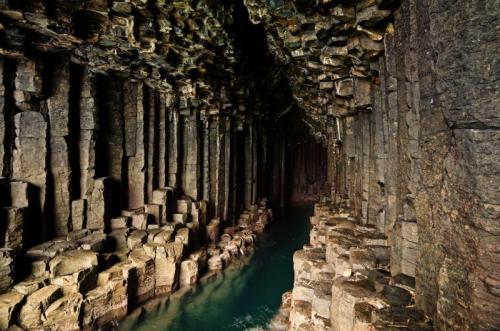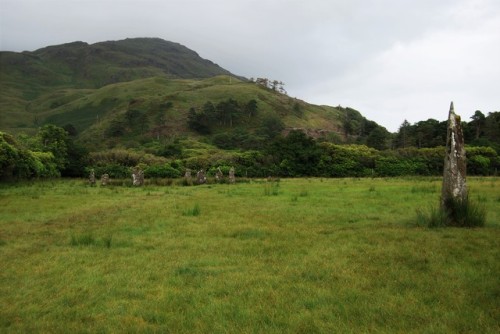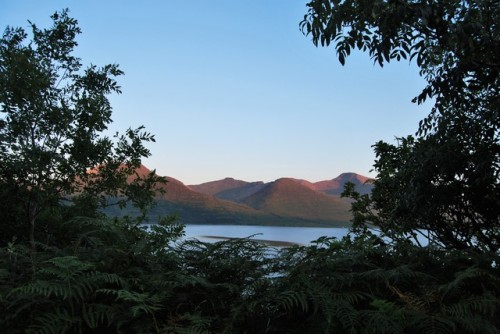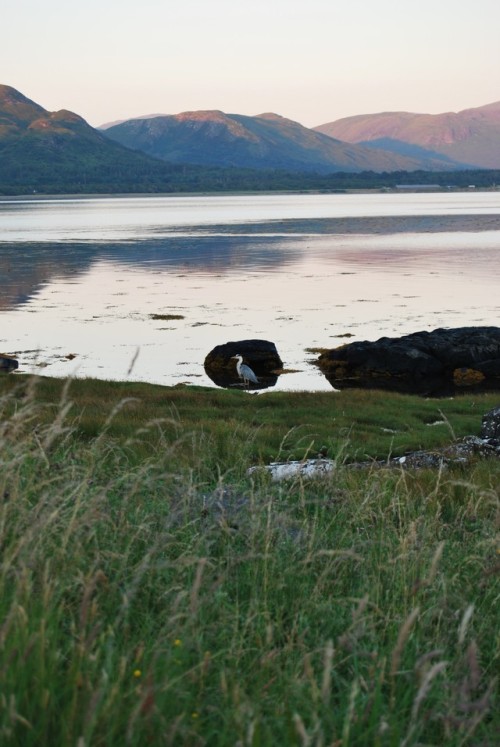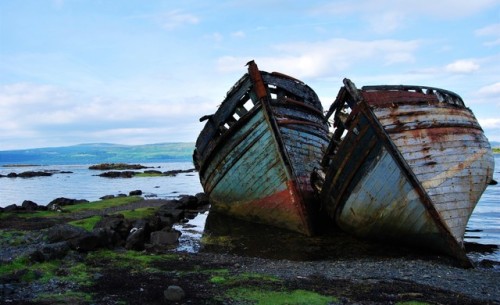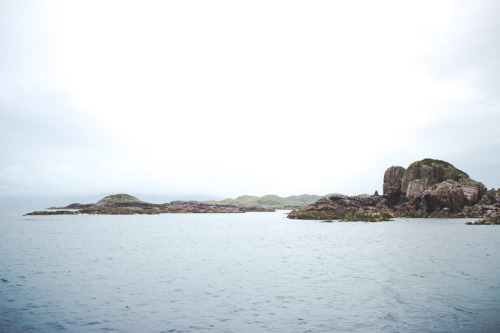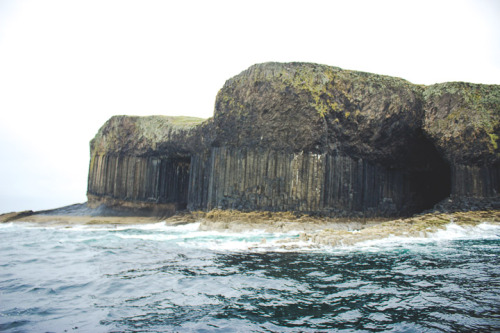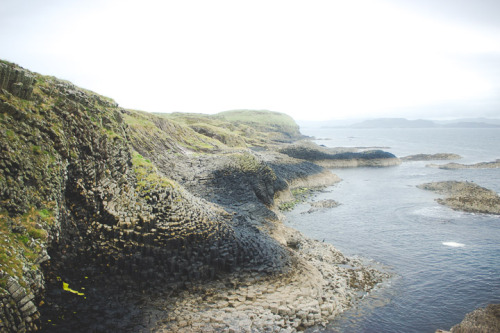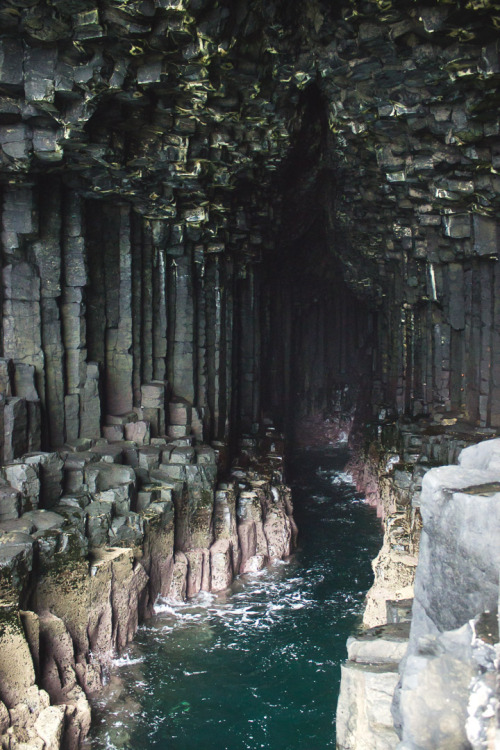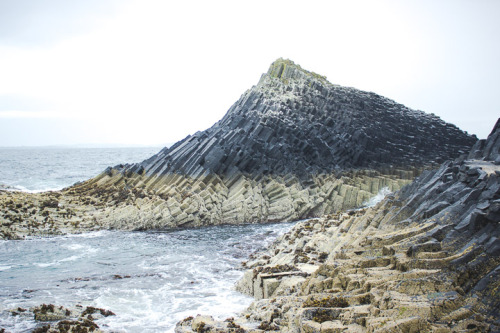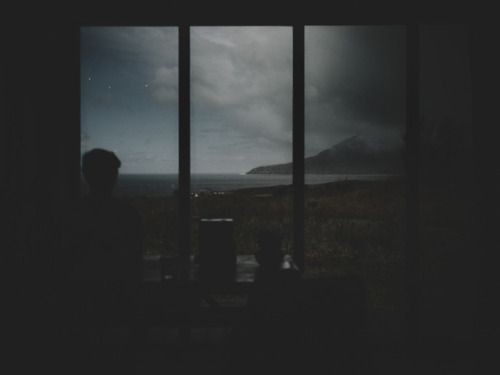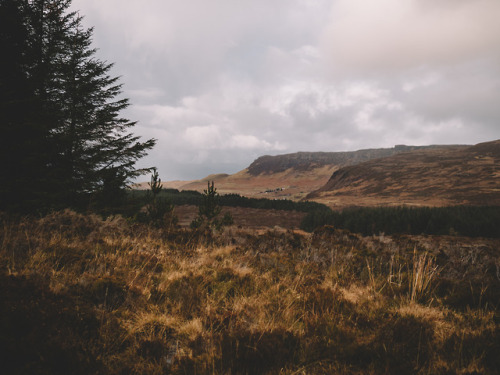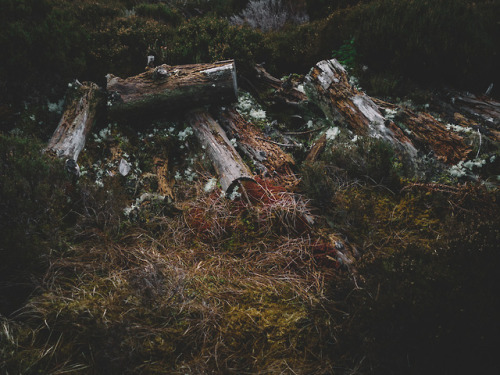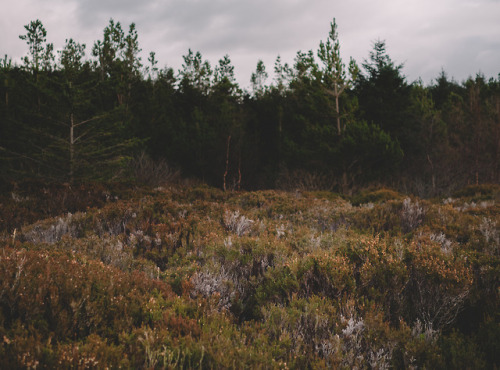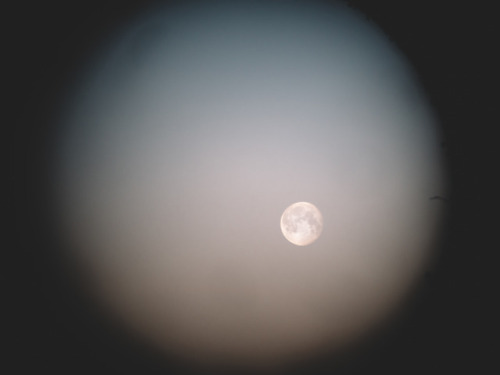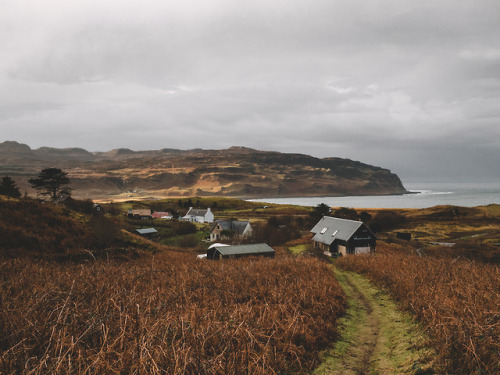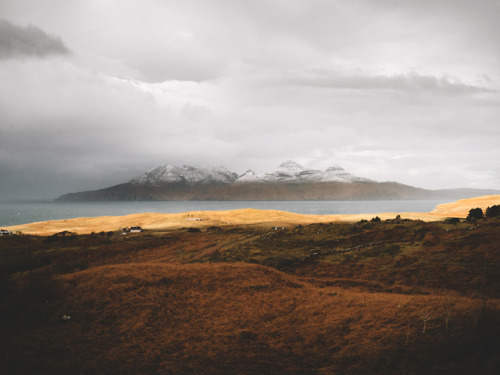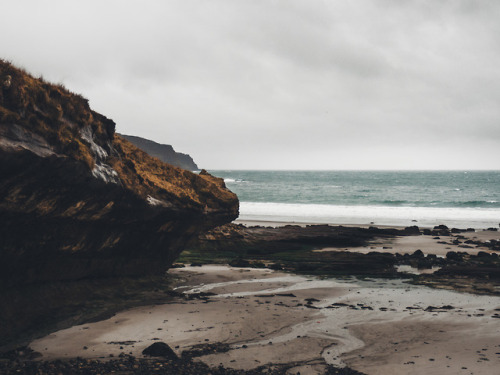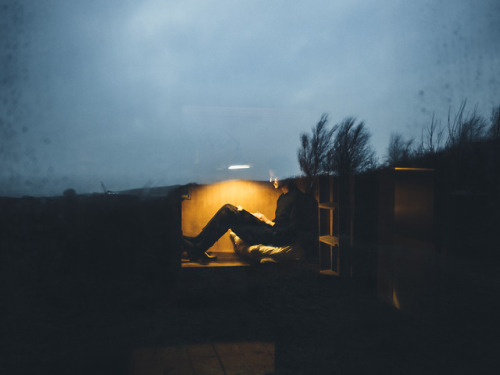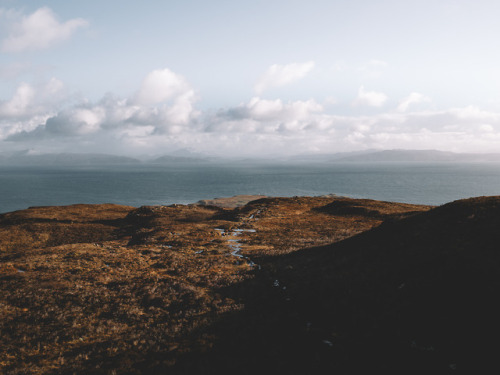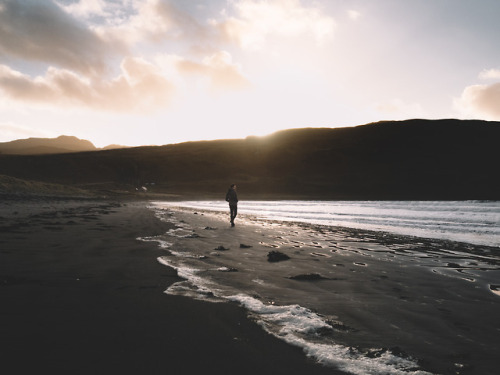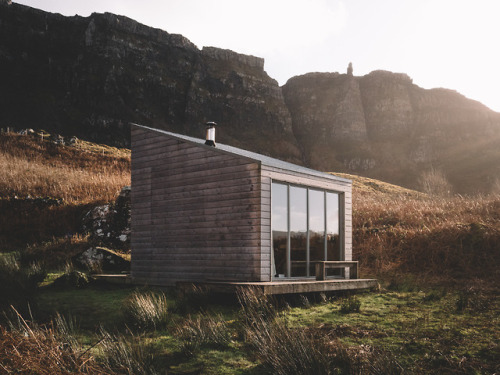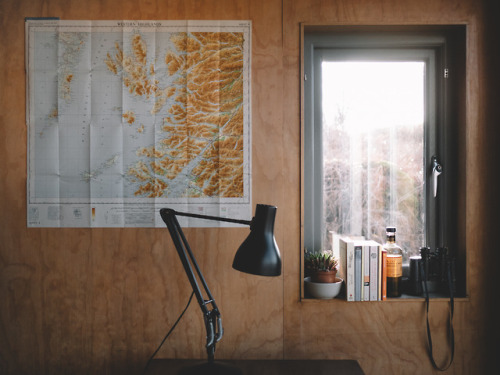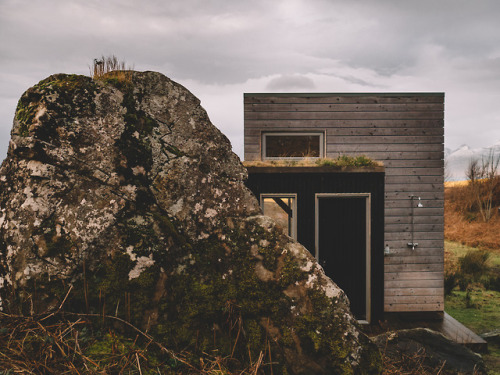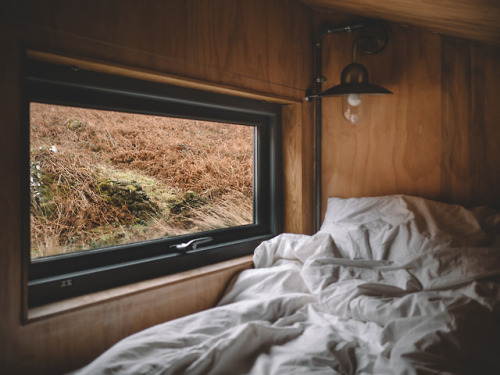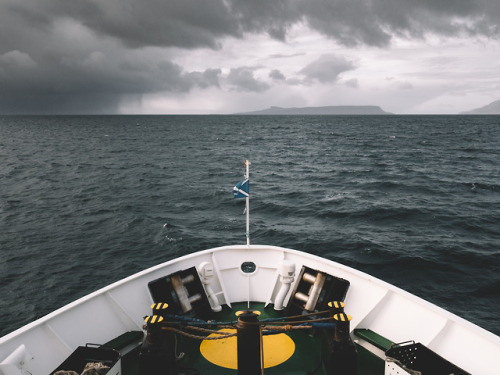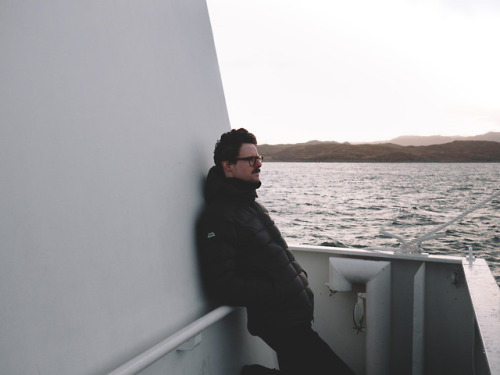#hebrides
Lochbuie stone circle, Isle of Mull, Scotland 2017
This small stone circle is the only one on Mull and stands in a breathtakingly beautiful setting, under the watchful gaze of Ben Buie.
You have to cross an extremely boggy field to reach it, so wear your tallest wellies and be very careful if you don’t want to be found as a bog body in thousands of years. Peat bogs are a type of wetland where the water on the ground surface is acidic and low in nutrients. They are filled with decaying organic matter, usually feature rich biodiversity and from a distance, they look rather homogeneous. However closer up, you discover that peat bogs are actually not that uniform in surface, depth or texture. In fact, they’re quite treacherous as you can never tell how deep (sometimes VERY deep) or spongy your next step is going to be. Hiking through them can be hell, as you can sink in bogs quite quickly.
The circle probably dates to the late Neolithic (3000 BC) or early Bronze Age. There were originally 9 stones, all of local granite. One of the stones has been replaced by a low boulder. The circle is about 12.3 metres in diameter, with the tallest stone about 2 metres high and the smallest about 1.2 metre high. Interestingly, the standing stones have been placed so that their flattest side faces the interior of the circle. There are three outlying stones, one about 5 metres from the circle to the south east. This is a fairly unobtrusive boulder about 1 metre high, and its azimuth of 123° with a very high horizon gives a declination of -12°, of no known significance. The second outlier is a very striking monolith about 3 metres high, standing at least 40 metres to the south west. The azimuth of 223.6° with a horizon height of 0.4° gives a declination of -23.7°, and so indicates the position of the setting sun at the winter solstice. The horizon is now partially blocked by nearby trees. Much further away (about 110 metres) is the third outlier, which is roughly 2 metres high. This stone looks like it has suffered a break near the top and was probably much taller when it was first erected. The bearing of 237° and an altitude of just over 2° gives a declination of -16.0°. This is the declination of the sun at the winter Quarter days in early November and early February.
Post link
The following day was somewhat calmer but continued persistently wet, although the rain was evidently getting fed up with falling the entire time, as it only dribbled aimlessly, on and off, in a decidedly half-hearted and desultory sort of way, no doubt having exhausted itself in the torrential downpours of recent days.
Algy reclined on the rough concrete step in his assistants’ new front gateway, gazing out across the still-green croft land to the brown peat bogs and hillsides beyond, wishing that his assistants had thought to provide some kind of waterproof cushion for the benefit of fluffy birds who did not much care for cold, damp tail feathers. The mist had cleared sufficiently to see the grey, blurry shapes of two out of the three islands which should be visible from that spot, although it looked as though they might vanish again at any moment, as things so often did on the wild west coast of the Scottish Highlands…
At first there was no sign of sentient life of any kind, and Algy contemplated the dreich October day alone, but eventually a lone wanderer ambled by and paused for a moment to exchange a few words.
“How’re ye doing?” enquired the sheep, adopting the form of greeting common to most local residents in that area.
“No so bad,” replied Algy, in the same manner. “And yourself?”
“Baaaaaaaaaaa!” bleated the sheep, and turning its head away it slowly walked away, leaving Algy alone on the step once again.
Algy hopes that if you should find yourself in a similar situation this Sunday, you will at least have the benefit of a wee bit of conversation with some fellow creature, even if it is only a sheep… but just in case you do not, he sends you all lots of damp but very fluffy hugs xo
Post link

Hebridean sheep

McCaig’s Tower, Oban / Scotland (by Benjamin Steele).

